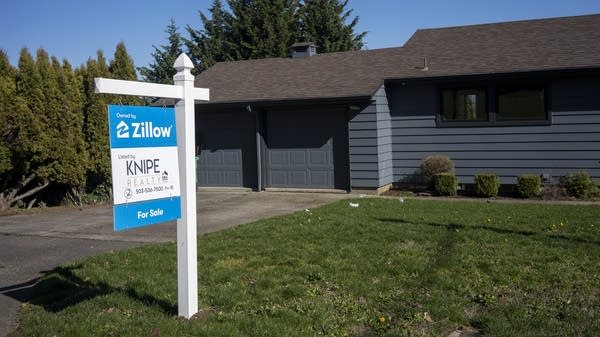There are more houses for sale in the U.S., but not enough buyers that can afford them
In a balanced housing market, households making about $100,000 a year should be able to afford 60% of homes. Today, they find less than 40% within reach.

Existing homes sales fell in April for the second month in a row, according to a report out Thursday from the National Association of Realtors.
Sales are down 2% from a year ago, even though inventory is up. The reality is, a lot of people who want to buy can’t afford most of the houses that are up for sale.
Just five years ago, someone making $75,000 a year could afford about half of the homes for sale around the country. Someone making that salary today can only afford about 20% of homes.
Nadia Evangelou, senior economist and director of real estate research at the National Association of Realtors, said that’s a “massive difference.”
She said the pre-COVID housing market was pretty balanced for middle-income buyers. Now, not so much.
“And that's because the homes coming onto the market aren't always priced where the demand is. In fact, in many places, we're still seeing a huge mismatch between income levels and what's available to buy,” she said.
In a balanced market, households making about $100,000 a year should be able to afford 60% of homes. Now, they find less than 40% within reach.
Susan Wachter, a professor of real estate at the University of Pennsylvania’s Wharton School, said this is relatively unusual for the U.S.
“We were blessed in America to have a quote-unquote balanced market for many decades. You know, different periods, better or worse. But it's now clear that we're in a different housing regime,” she said.
One where supply is nowhere near meeting demand and isn’t on track to catch up any time soon. Not nationally, at least.
But? “We don't buy houses in America. You buy a house in a particular market,” Wachter said.
And there are certain areas — namely small and mid-sized cities in the Midwest and South — where the housing market is coming back into better balance.
But Lisa Sturtevant, chief economist at Bright MLS, said they’re not necessarily the places people most need or want to live.
“We have seen from Census data and from other data that the bigger metro areas have been attracting more jobs and more people over the last year,” she said. “In the places where jobs are growing faster, where population is being attracted to, that affordability picture has not improved as much.”
And Sturtevant said that could become an increasingly big issue. “Those regions who want to attract jobs, want to attract workers, are going to find it's going to be harder and harder,” she said, if there aren’t places those workers can afford to live.













